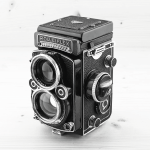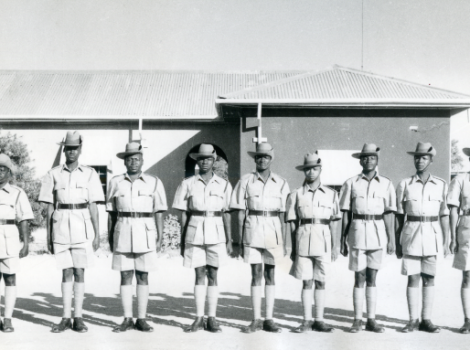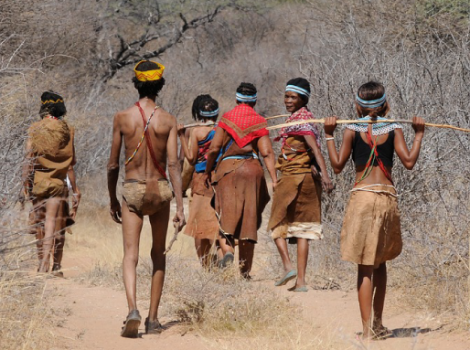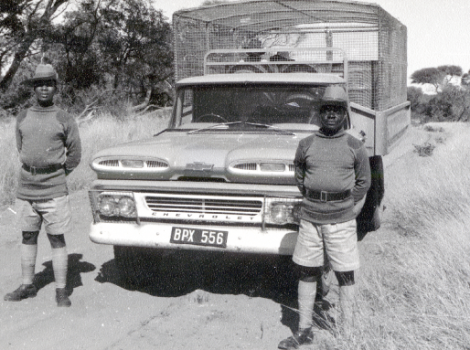Exciting times for YourBotswana and our valued readers! A friend of Botswana has reached out to us to share his memories of growing up in 1960’s Botswana. Ian Brooks has kindly and very generously offered to share not just stories but also precious photos captured by his father, the late Donald Maxwell Brooks and later donated to his children, some of whom were born in Serowe and Maun.
We will, over the next weeks, share a series of the aforementioned stories, videos and photographs, told in Ian Brooks’ own words. We hope you enjoy the series.
Life in 1960s Botswana – An Introduction

My father arrived in Maun during early 1962, leaving four years later in 1966. He was a police officer, trained in the UK, but working in the Colonial Service. His brief on being transferred to Maun was to sort out the ‘w’ element; there was a perception that there was insufficient regulation, particularly the hunting of the wild animals, and his task was to bring this under control. By all accounts, he was very successful, as his posting was extended from 2 to 4 years, which was very unusual if not unheard of, and he received a good promotion afterwards.
The images we have to share are of colonial life, such as it was, during the early 1960s. It was not a perfect political or social model, and we do not intend to portray it as such. It is a simple, photographic record of life as it was lived in those times, for better or worse.

We travelled as a family, and we were children while in Bechuanaland Protectorate/ Botswana; the younger 3 children were born in Bechuanaland Protectorate. The context is a combination of my own memory of life in Maun as a child, as well as various conversations with my parents over the years about the photographs and life in Botswana while we were there (1958 to 1968).

My father’s training in photography was primarily by the British Police for the recording of crime, but it was also his hobby. Photography in the 1960s was not yet something everyone did using their iPhones with all sorts of automatic settings we don’t know about to capture the perfect image; there were no conventional phones, let alone iPhones in Maun at that stage! All the still images were taken using a manual Rolleiflex camera.
Manual in the sense that one had to work out all the settings using light meters, exposure time for the film in the camera at the time, etc and focussed the camera by hand. Wildlife photography was particularly challenging with this technology. My father would develop the negatives and positives (paper copy) himself, using my eldest sister Jane and myself to do the turning of the paper in the various chemical baths necessary to develop the picture. He did not have a dedicated ‘dark room’ required for these activities, so he used to lock himself in the wardrobe to remove the film from the camera transferring it into a tank to develop the negative. The bathroom was blacked out with curtains, etc and the bath boarded over to create a working surface for developing the paper copies.
All the photographic materials were ordered by post from South Africa, a process that would take many weeks. And if something was left off, or not available or damaged in transit (the Maun to Francistown road in those days was barely passable in good weather and damage to goods not uncommon), it was more weeks of waiting. Colour photography was in its infancy, and my father did not have the equipment necessary to develop these. He did occasionally use colour, but these had to be sent away for developing.
He was also a keen cine photographer, these were generally in colour. These have been converted to digital format, but unfortunately, the films have deteriorated to an extent, so the quality of these is not what it used to be.
There were 3 aspects to my father’s photography, as follows:
- His police work. For obvious reasons, we, his family, do not have access to any of these
- His private hobby which is this collection
- He also had a small weekend business while in Maun doing portrait photographing for the local population on request in his ’studio’, and this was a very popular, thriving business.
There was always a queue in the backyard when the ‘shop’ was open. He offered a good deal too, a paper copy photograph and the negative, so if one wanted further copies, one simply brought the negative back and he would make prints (a neat anti-ageing technique!), possibly the first Photography Shop in Maun? As this was new technology, re-prints were often requested as ‘please wash the negative’, which I guess was my father’s explanation of the process.
Maun in those days was a small, sparsely populated village with poor transport links. It was a difficult place to get to, and not much to do on arrival. Escaping the heat was a particular challenge. There were some government agencies providing basic services, big-game hunting and occasional tourist safari’s.
There was an airport, although many would not recognise it as such. There was an area of open land opposite Riley’s (hotel and petrol station), which was used, amongst other things, as a landing strip for Dakota’s (aeroplane), the workhorses of that era. If a pilot required some guidance to land, a few land-rovers (versatile vehicles) were lined up to help the pilot! I recall a Dakota engine being started by attaching a rope to the propellor and a team of men practising their tug of war!

The same area was also used for markets and a baseball game. There was a school with a single classroom providing education for (Western) children for the first 3 years of education; thereafter it was off to boarding school. There was a small hospital with 1 doctor, usually a young intern either from the UK or South Africa. There was a local shop where provisions that were not grown were obtained, if available and a bank and post office.
I do not recall farming being a significant industry, although the local population kept cattle and grew their own maize. Water was always a challenge for those living away from the ‘Swamps’, and the local ladies would walk for miles carrying water containers on their heads. Millie-meal was made by the ladies crushing the maize in a wooden container fashioned from a tree trunk, crushing the maize by lifting and dropping a pole on the maize. This was usually accompanied by beautiful melodious, rhythmic singing.
Our stay pre-dated continuous electricity (we had power for a few hours every evening, provided the town generator was working), and lighting was usually provided by paraffin or gas lamps. Before paraffin fridges were available (and a supply of paraffin), our fridge would be a charcoal box hanging in a tree, with a bucket of water hanging above dripping water onto the charcoal.
The resulting evaporation kept the contents cool, if not chilled, and fresh. Freezers were unheard of. Hot water was supplied from a wood-fired boiler outside, and we cooked on a log-fired ‘Aga’ cooker; not the ideal appliance for cooking during a Maun summer.
Reference:This is the Foot & Mouth Vaccination Team, Maun, Ngamiland, 3 July 1964. Cattle were the main export and consequently, an important part of the economy in those days (diamonds were yet to be discovered), and disease control was necessary to maintain the value of the meat.

I recall that in those days, the cattle were driven on foot by the local herdsmen to the nearest transport head, which I think was Nata. The herders used to walk the cattle through wildlife areas, doing their best to protect against predators.
This was also the time the Game Fence was erected, and the veterinary department was involved in this. One of the employees was a South African by the name of Conrad van Eyssen; we met him while we were in Maun and became good friends. Subsequently, when I got sent away to boarding school in Johannesburg, I spent most weekends with his mother, a most wonderful, kind lady. I will talk more about boarding school later.
Written by Ian Brooks
Ian is Donald Brooks’ son. His father arrived in Maun in early 1962, leaving four years later in 1966. He was a police officer, trained in the UK, but working in the Colonial Service. His brief on being transferred to Maun was to sort out the ‘w’ element; there was a perception that there was insufficient regulation, particularly the hunting of the wild animals, and his task was to bring this under control.
Ian and his siblings were children while in Bechuanaland Protectorate/ Botswana; the younger 3 children were born in Bechuanaland Protectorate. The context is a combination of his own memory of life in Maun as a child, as well as various conversations with his parents over the years about the photographs and life in Botswana while they were there (1958 to 1968).




What a brilliant project!